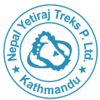Practical Information
Introduction
Welcome to Nepal Yetiraj Treks, your trusted trekking partner in Nepal. Whether you’re planning a short hiking trip, a high-altitude trek, or an adventure tour, having the right information is essential for a safe, enjoyable, and hassle-free experience.
This guide provides essential practical information about travel logistics, permits, accommodation, food, safety, weather conditions, and more.
1. Booking & Payment Information
How to Book a Trek with Nepal Yetiraj Treks?
Booking a trek with us is simple:
- Browse Treks – Explore our itineraries on Yetiraj Treks.
- Send an Inquiry – Contact us via [email or WhatsApp (+977 9803623151)] for availability.
- Confirm Your Trip – Choose your trek, confirm details, and receive a booking confirmation.
- Make a Deposit – Secure your spot by making a 30% advance deposit (via bank transfer, online payment, or credit card).
- Receive a Confirmation Package – You’ll get detailed trip information, packing lists, and a pre-departure guide.
💰 Payment Methods:
- Bank Transfer (We provide bank details upon booking)
- Credit/Debit Card (3-4% service charge applies)
- Cash Payment (Accepted in Nepal)
📌 Final Payment: The remaining balance is due before your trek begins.
2. Travel Permits & Entry Fees
Required Permits for Trekking in Nepal
Depending on your chosen trek, you’ll need different permits.
A. TIMS Card (Trekkers' Information Management System)
- Required for: All trekkers in Nepal
- Cost:
- Group trekkers – USD 20
- Solo trekkers – USD 20
B. National Park & Conservation Area Permits
📍 Annapurna Conservation Area (ACAP) – USD 25
📍 Sagarmatha National Park (Everest Region) – USD 25
📍 Langtang National Park – USD 25
📍 Restricted Area Permits -Manaslu – Varies (USD 100+ for the first week)
Upper Mustang, Dolpo, etc- $500 for 10 Days, After Ten days $50 per Day.
📌 Permit Application: We handle all permit processing once you provide a passport copy & passport-sized photo.
3. Packing List & Trekking Gear
Essential Trekking Equipment
✔ Clothing: Moisture-wicking base layers, fleece jackets, waterproof outerwear
✔ Footwear: Sturdy trekking boots, warm socks
✔ Backpack & Gear: Daypack, sleeping bag (rated for -10°C or lower)
✔ Accessories: Sunglasses, gloves, trekking poles, water purification tablets
✔ Personal Items: Sunscreen, lip balm, first aid kit
📌 Need gear? We offer rental services in Kathmandu.
🔗 Check our detailed Packing List here: Trekking Equipment Guide
4. Accommodation & Meals
🏨 Accommodation During Trekking
- Tea Houses/Lodges – Common along popular routes (Everest, Annapurna, Langtang). Basic rooms with shared bathrooms.
- Camping (For Remote Treks) – Required in Upper Dolpo, Kanchenjunga, and off-the-beaten-path routes.
🍛 Meals
- Dal Bhat (Rice, Lentil Soup, Vegetables) – The ultimate trekking meal!
- Noodles, Momos, Pasta, Soups – Available at tea houses.
- Breakfast: Porridge, Pancakes, Omelets, Tibetan Bread
- Drinks: Tea, Coffee, Fresh Juice
📌 Drinking Water: Bottled water is available, but we recommend water purification tablets or a lifestraw bottle.
🔗 Learn More About Food & Accommodation: Trekking Meals & Lodges
5. Health & Safety During Trekking
Altitude Sickness & Prevention
- Acclimatize properly (rest days included in our itineraries).
- Drink plenty of fluids and avoid alcohol at high altitudes.
- Consider carrying Diamox (altitude sickness medication).
Emergency Evacuation & Insurance
📌 Travel Insurance: Mandatory for high-altitude treks. Must cover helicopter evacuation in case of emergencies.
📞 Emergency Contact: +977 9803623151 (24/7 support)
+977 9766258535,+977 9862765606, +977 9841843497
🔗 Check Our Safety Guidelines: Trekking Safety & Altitude Tips
6. Best Time to Trek in Nepal
Seasons for Trekking
✔ Spring (March-May) – Best for rhododendron blooms & clear weather.
✔ Autumn (Sept-Nov) – Best for stable weather & clear mountain views.
✔ Winter (Dec-Feb) – Cold, but good for low-altitude treks.
✔ Monsoon (June-August) – Rainy, but good for Mustang & Dolpo treks.
🔗 Learn More About Seasonal Trekking: Best Time for Trekking in Nepal
7. Responsible & Sustainable Trekking
♻️ Leave No Trace Policy
- Do not litter; carry all waste back to town.
- Use refillable water bottles instead of buying plastic.
- Respect local culture; ask before taking photos.
🌱 Our Commitment to Sustainable Tourism
- We support local guides and porters with fair wages.
- We promote eco-friendly trekking with minimal environmental impact.
🔗 Read More: Sustainable Trekking in Nepal
8. Frequently Asked Questions (FAQs)
Q1: Do I need prior trekking experience?
Not necessarily! We offer treks for beginners and experienced trekkers.
Q2: What fitness level is required?
A moderate level of fitness & endurance is recommended. For challenging treks like Everest Base Camp, preparation is advised.
Q3: Can I do a solo trek in Nepal?
As of 2023, solo trekking in restricted areas is not allowed. We provide licensed guides for your safety.
9. Contact Us
📍 Nepal Yetiraj Treks
📞 WhatsApp: +977 9803623151
✉ Email: info@yetirajtreks.com
🌍 Website: https://yetirajtreks.com
Final Thoughts
At Nepal Yetiraj Treks, we ensure that your trekking adventure is safe, memorable, and well-planned. Whether you are a first-time trekker or a seasoned mountaineer, our expert team, experienced guides, and commitment to quality service will make your Nepal journey extraordinary.
📌 Ready to plan your trek? Check out our Top Trekking Packages and start your adventure today! 🚀

